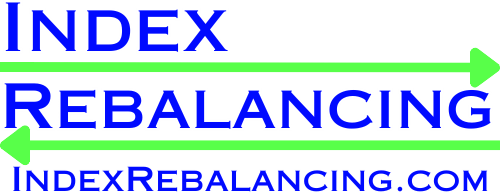
Trump's Executive Order Opens 401(k)s to Private Equity and Crypto: What It Means for Investors
Share
President Trump's August 7th executive order just opened the floodgates to a $12 trillion market shift. The sweeping directive instructs the Department of Labor and SEC to expand access to private equity, real estate, cryptocurrency, and other alternative investments within 401(k) retirement plans. For millions of Americans accustomed to choosing between mutual funds and index ETFs like SPY and QQQ, this represents the biggest change to retirement investing in decades.
What the Executive Order Actually Does
The order directs the Labor Secretary and the SEC to ease access to alternative assets and clarifies that regulators should revise rules that shield plan sponsors from litigation risk. This isn't just regulatory fine-tuning—it's a fundamental shift in how 401(k) plans can operate.
The directive tells the Department of Labor, SEC and Treasury to remove regulatory barriers and clarify guidance, essentially clearing the path for asset managers to offer products that were previously restricted or impractical for retirement accounts. The order's language focuses on relieving "regulatory burdens and litigation risk" while notably omitting explicit investor protections.
The timing isn't coincidental. Asset managers like BlackRock hailed the move as a way to tap the $12 trillion defined-contribution market, and BlackRock intends to launch a retirement fund containing private equity and credit to capitalize on these new opportunities.
The Winners and Losers in This Market Shift
Asset Management Giants See Dollar Signs
Alternative-asset firms like Blackstone and KKR could tap the $12 trillion 401(k) market, representing a massive new revenue stream. These firms have historically served institutional investors and wealthy individuals. Now they're positioning to serve middle-class retirement savers.
The fee structure tells the story. Private equity and real-asset funds typically charge "2 and 20" fees and lock up capital for years, contrasting with the 0.26% average fee on mutual funds. For asset managers, this represents a potential goldmine in management fees.
Retirement Savers Face New Complexity
Critics noted that these investments are riskier, less transparent and carry higher fees than mutual funds. The contrast is stark: while investors can buy and sell ETF investing positions like SPY stock or QQQ stock throughout the trading day, illiquid assets cannot be sold quickly to meet redemptions, and valuations are often opaque, making it hard for savers to monitor performance.
Investment professionals warned that the alternative investments the executive order would permit have not been stress-tested in a market downturn and come with liquidity mismatches. This creates a fundamental mismatch between retirement accounts that need flexibility and investments that lock up capital for years.
Market Volatility Meets Portfolio Management Reality
For those practicing disciplined investing strategies, this development raises important questions about portfolio management and market volatility. Asset managers argue that younger workers can benefit from higher long-term returns and that diversified portfolios may better withstand inflation.
The diversification argument has merit. Traditional index fund investing in S&P 500 ETFs like VOO or SPY provides broad market exposure, but alternative assets theoretically offer exposure to non-correlated returns. However, the execution matters enormously.
Where Micro-Rebalancing Principles Apply
A rules-based investment system like Micro-Rebalancing thrives on transparency, liquidity, and the ability to respond mechanically to market movements. Alternative assets in 401(k)s present challenges to these principles:
Liquidity Constraints: While you can rebalance SPY or QQQ positions daily, private equity investments typically lock up capital for 7-10 years.
Valuation Opacity: Stock market investing provides real-time pricing. Valuations are often opaque for private assets, making systematic rebalancing impossible.
Fee Drag: The "2 and 20" fee structure means even successful alternative investments must significantly outperform to justify their cost after fees.
Legal and Fiduciary Implications Create Uncertainty
Fiduciaries remain bound by ERISA, meaning plan sponsors could face lawsuits if alternative offerings prove unsuitable. This creates a fascinating tension: the executive order encourages broader access while existing laws still require prudent investment selection.
Legal experts emphasize that the order itself does not override these obligations and that new products like collective investment trusts and interval funds will be needed. These new structures attempt to bridge the gap between illiquid investments and liquid retirement accounts, but they're largely untested in market stress.
Morningstar analysts cautioned that plan sponsors would need new frameworks to manage the extra complexity and litigation risk. For retirement savers, this means their employers will be navigating uncharted territory in investment selection.
What This Means for Your Investment Strategy
The executive order doesn't immediately change what's available in your 401(k), but it sets the stage for significant shifts. Changes won't be immediate, as regulatory guidance and product development will take time.
For investors focused on beating the market through disciplined strategies, several considerations emerge:
Maintain Core Holdings: Regardless of new alternatives, maintaining positions in liquid, transparent investments like index ETFs remains crucial for portfolio management flexibility.
Evaluate Total Costs: Individuals should carefully weigh risk tolerance, time horizon and diversification needs before investing. The fee differential between traditional and alternative investments is substantial.
Preserve Rebalancing Capability: Any investment strategy that relies on systematic rebalancing requires liquid positions. Alternative assets, by definition, reduce this capability.
The Road Ahead: Opportunity Meets Caution
The story underscores the classic trade-off between chasing higher returns and preserving liquidity and transparency. For retirement savers, this order represents both opportunity and risk.
The next 12-18 months will be crucial as regulators provide guidance and asset managers develop products. Smart investors will watch for products that provide alternative asset exposure while maintaining the liquidity and transparency that enable disciplined portfolio management.
Suggested Internal Links:
Suggested External Links:
